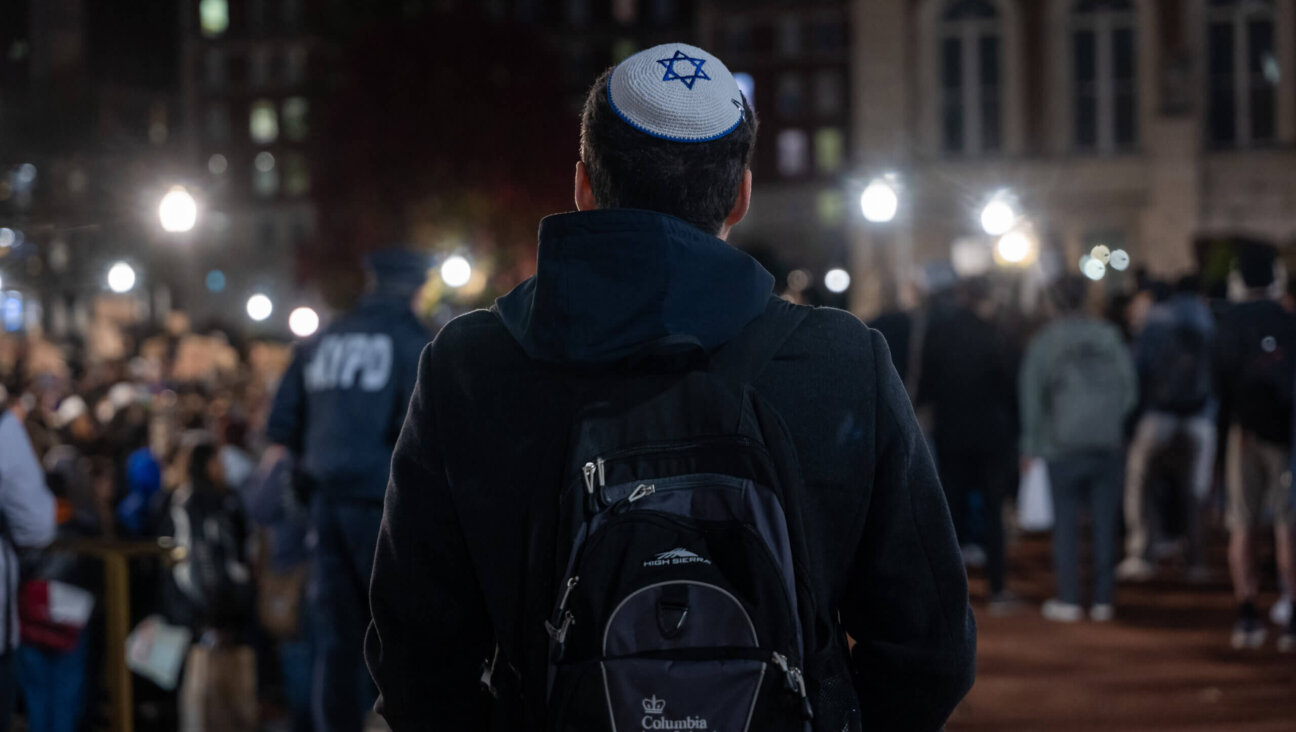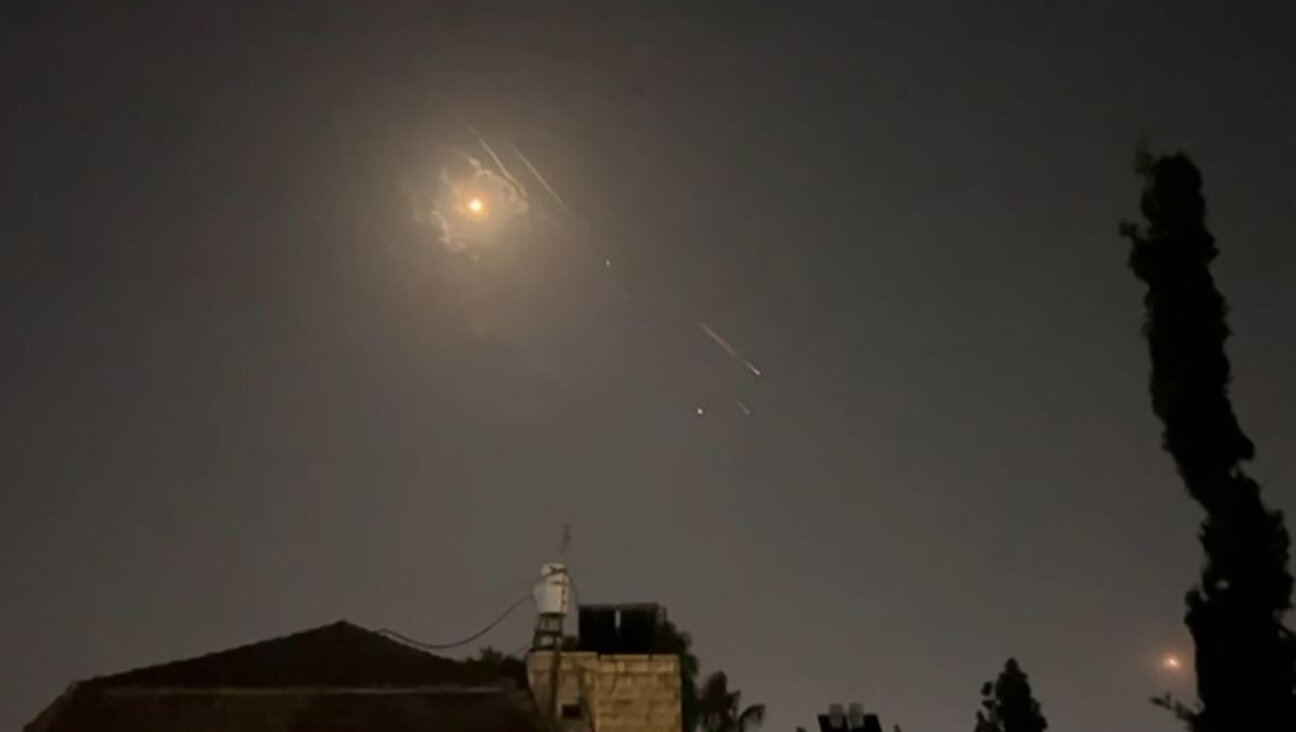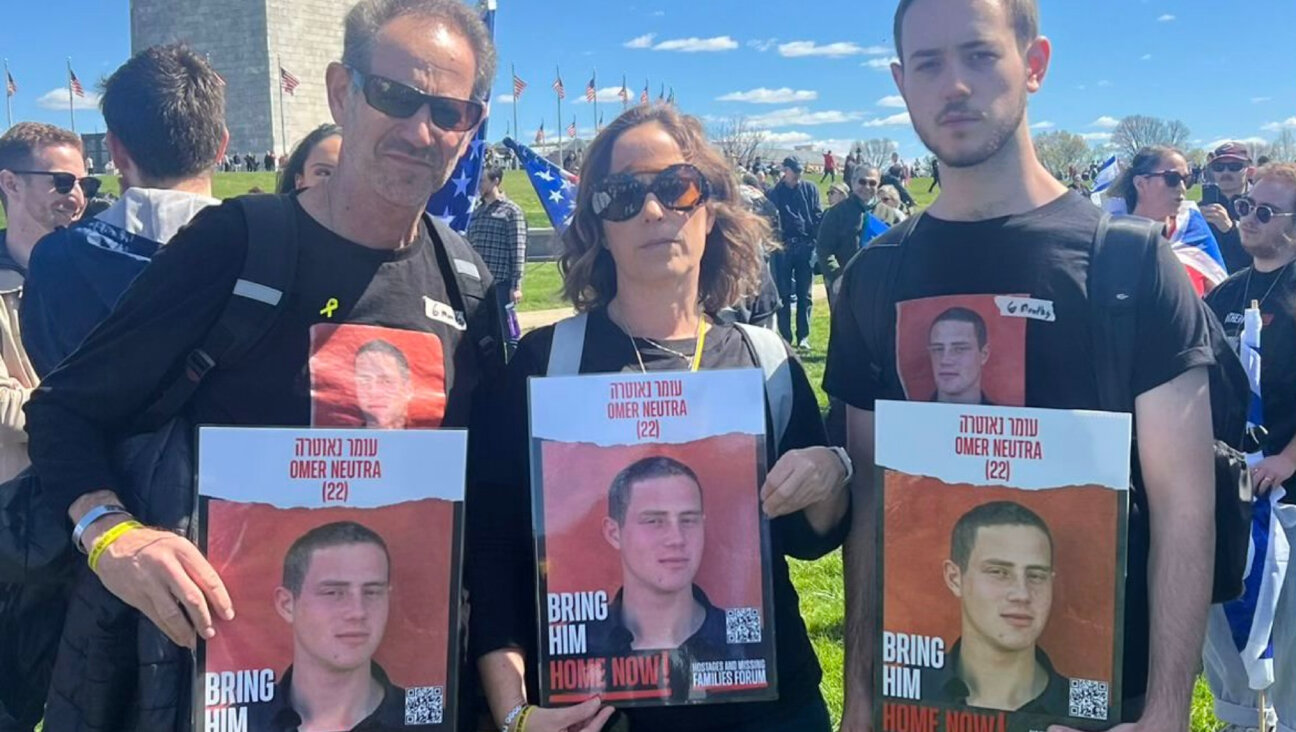When Sephardic Salonica Burned A Century Ago — Only To Be Destroyed Again

Image by Getty Images
(JTA) — A century ago, on Aug. 18, 1917, a massive fire roared through the Mediterranean port city of Salonica, Greece, then home to the largest and most dynamic Ladino-speaking Sephardi Jewish community in the world.
According to local legend, the fire erupted one Sabbath afternoon amid World War I when the coals of a war refugee roasting eggplants overturned. A fierce wind catapulted the flames into a major conflagration that left two-thirds of the city in ashes and 70,000 residents homeless, 52,000 of whom were Jews. Thirty-two synagogues, 10 rabbinical libraries, eight Jewish schools, the communal archives, and numerous Jewish philanthropies, businesses and clubs were destroyed.
A local teacher bemoaned the fate of his city: “Of the brilliance and grandeur of this famous Jewish community, nothing remained but mountains of ashes. Everything was lost; everything disappeared.” A journalist further lamented: “The most important thing that the fire destroyed was the Jewishness of Salonica. It is a terrible story.”
Such devastation paled in comparison to what would befall Salonica’s Jews exactly 26 years later. In the spring and summer of 1943, the Nazi occupying forces deported nearly 50,000 Jews from Salonica to Auschwitz; 96 percent perished. The last of the 18 deportation transports arrived at Auschwitz precisely on Aug. 18, 1943.
If the fire of 1917 was the beginning of the end, deportations to Auschwitz signified the finale — or at least that’s how the story could be told.
But the reality was not straightforward. Remarkably, after the fire, Salonica’s Jews persevered and rebuilt their institutions — despite resistance from the Greek government — to such an extent that the Nazis encountered a robust Jewish communal presence upon their occupation of the city.
Recent discussions have highlighted the role of gentrification in dramatically reshaping urban demographics and the cityscape, especially in the wake of catastrophes, like the case of New Orleans. A recent New Republic article explains that gentrification is not only about people with disposable income moving into the neighborhood and displacing those who lived there before, but rather about “profit and power, racism and violence on a massive scale.” Similar dynamics were at play in Salonica.
“Study for 1917 Fire —Salonika” (2016) by Harry I. Naar (Courtesy of Naar) Salonica had suffered from a series of fires in its history, but during the four centuries under the benign rule of the Ottoman Empire, the city’s residents were permitted to rebuild without much state interference. Not so after the Great Fire of 1917. The Greek government, which had only recently annexed Salonica during the Balkan Wars (1912-13), saw in the fire an opportunity to transform once and for all Jewish and Ottoman Salonica into Greek Thessaloniki.
With this nationalist goal in mind, the government expropriated the burnt terrain and prevented residents from rebuilding on their land. Instead, under the guise of promoting state interests and a modern, European urban plan that would transform the downtown into a middle- and upper-class Greek space, the government auctioned off the razed property: Those who could pay, rather than those who had lived in the area, became the new occupants of the city center. The National Bank of Greece outbid the Jewish community for the plot on which the Talmud Torah, the main Jewish communal school, had stood before the fire. Today, the upscale Electra Palace hotel sits in the heart of the city where another Jewish school, the Alliance Israélite Universelle, once stood.
The prime minister, Eleftherios Venizelos, encouraged British and French urban planners to view the city as a “blank slate” and ignore the centuries-long imprint left by Jews and Muslims. One of the urban planners described Venizelos as “particularly enthusiastic about the new Salonica, almost to the point of regarding the fire as providential” and conceded that the “fundamental purpose of the plan was to deprive the Jews of complete control of the city.” But the planner also noted, as if to offer consolation, “There was no desire to oust the Jews completely.”
Local Jewish leaders petitioned Jewish organizations abroad and the great powers to intervene with the Greek government, but they met with little success. Even The New York Times noted in 1919 that the Greek government never offered a “satisfactory explanation” for the cause of the fire — the burnt eggplant story was not convincing — and that “natural suspicions of the inhabitants were accentuated by the shouts of joy” coming from the main Athens newspapers, which celebrated “the disappearance of the ancient ‘ghetto of Macedonia.’”
Largely prevented from rebuilding in the city center, the Jewish community began to rebuild on the city outskirts, including new neighborhoods established in allied military barracks to house the mostly poor Jewish fire victims. Others opted to emigrate. A Jewish leader in Salonica explained that it was not so much the fire itself, as devastating as it was, but rather the “profoundly demoralizing” impact of the plan for the “new” and “modern” city that propelled many Jews to flee. One Ladino satirist quipped: “Doesn’t ‘modernism’ mean … ‘anti-Semitism’?”
But a sentiment of optimism coexisted with the sense of despair. The fire provoked the creation of an important daily Ladino newspaper, El Puevlo (The People), which aspired to “return our great community to its prior flourishing state” and to “assure the future of the Jewish people.” The same Jewish teacher who had lamented the destruction of the fire also expressed hope, saying “Little by little … our great community, so cruelly afflicted today, will be reborn from the ashes more brilliant than ever before!”
Remarkably, the period after the 1917 fire witnessed the most vibrant Jewish cultural productivity in the city’s history, with more Jewish newspapers, magazines and books published in Ladino (and French, Greek and Hebrew) than ever before. Since so much literature had been destroyed — both religious and secular — there was a desperate need for new publications. The resulting Ladino-Hebrew edition of psalms even wound up in Sephardi libraries as far afield as Seattle, Washington.
Despite growing tensions between Salonican Jews and the Greek state and increased demands that Jews — like the cityscape itself — become more “Greek,” the Jewish community succeeded in building several dozen new synagogues and a new school system. It restarted the Jewish hospital and medical dispensary and established new institutions, including a tuberculosis clinic, girls’ orphanage and maternity ward. By 1938, there was talk of the Jewish communal offices being transferred back to the city center — but the outbreak of the war prevented the move.
As much as Salonica’s Jewish community rebounded from the fire of 1917, the destruction wrought by the German occupation was insurmountable. Beyond the dispossession, deportation and murder of almost all of Salonica’s Jews by the Nazis, the entire character of the city was irrevocably transformed. Several dozen synagogues, with the exception of one or two, were destroyed by the Nazis and their collaborators; visual traces of the Jewish presence in the built environment were gone.
Salonica’s vast Jewish cemetery — the largest in Europe, dating to 1492, with more than 300,000 graves over a terrain the size of 80 football fields — also became prey to the ostensible demands of modern urban planning. Due to the 1917 fire and the subsequent expansion of the city (compounded by the arrival of 100,000 Orthodox Christian refugees from Turkey following a forced population exchange), the Jewish cemetery became the new geographic center of what was supposed to be Greek Thessaloniki. For 20 years, the Jewish community succeeded in deflecting efforts made in the name of urban “progress” to expropriate the burial ground.
But the defense failed once the city came under Nazi occupation. The Greek authorities used the occupation as a pretext to demolish the Jewish cemetery. They utilized marble tombstones to erect much of the rebuilt, modern city — to refurbish churches damaged in the 1917 fire, to construct “modern” walkways and “modern” town squares, and to fashion the campus of the largest university in the Balkans, which now stands atop the former Jewish burial ground.
Pillaged relics of the Jewish dead became the literal building blocks of urban renewal — a systematic and violent process begun a century ago, in the wake of the fire of 1917, intensified during the German occupation and continued in its wake. The result can be seen today. A stroll through Salonica reveals many modern buildings and a vast university campus in a city still suffering from a financial crisis. But few will notice that many of those modern buildings were built on land expropriated from Jews in 1917 — or again in 1943.
Perhaps this Aug. 18, in commemoration of the Great Fire of 1917, the city will deepen its effort to come to terms with its past and acknowledge the dark legacies of modern urban planning. Such would be a prerequisite for the city to again become, as a Guardian writer phrased it, “a place of multicultural amnesty.”
Devin E. Naar is the chair of the Sephardic studies program and an associate professor of history and Jewish studies at the University of Washington.

I hope you appreciated this article. Before you go, I’d like to ask you to please support the Forward’s award-winning journalism this Passover.
In this age of misinformation, our work is needed like never before. We report on the news that matters most to American Jews, driven by truth, not ideology.
At a time when newsrooms are closing or cutting back, the Forward has removed its paywall. That means for the first time in our 126-year history, Forward journalism is free to everyone, everywhere. With an ongoing war, rising antisemitism, and a flood of disinformation that may affect the upcoming election, we believe that free and open access to Jewish journalism is imperative.
Readers like you make it all possible. Right now, we’re in the middle of our Passover Pledge Drive and we need 500 people to step up and make a gift to sustain our trustworthy, independent journalism.
Make a gift of any size and become a Forward member today. You’ll support our mission to tell the American Jewish story fully and fairly.
— Rachel Fishman Feddersen, Publisher and CEO
Join our mission to tell the Jewish story fully and fairly.
Our Goal: 500 gifts during our Passover Pledge Drive!























